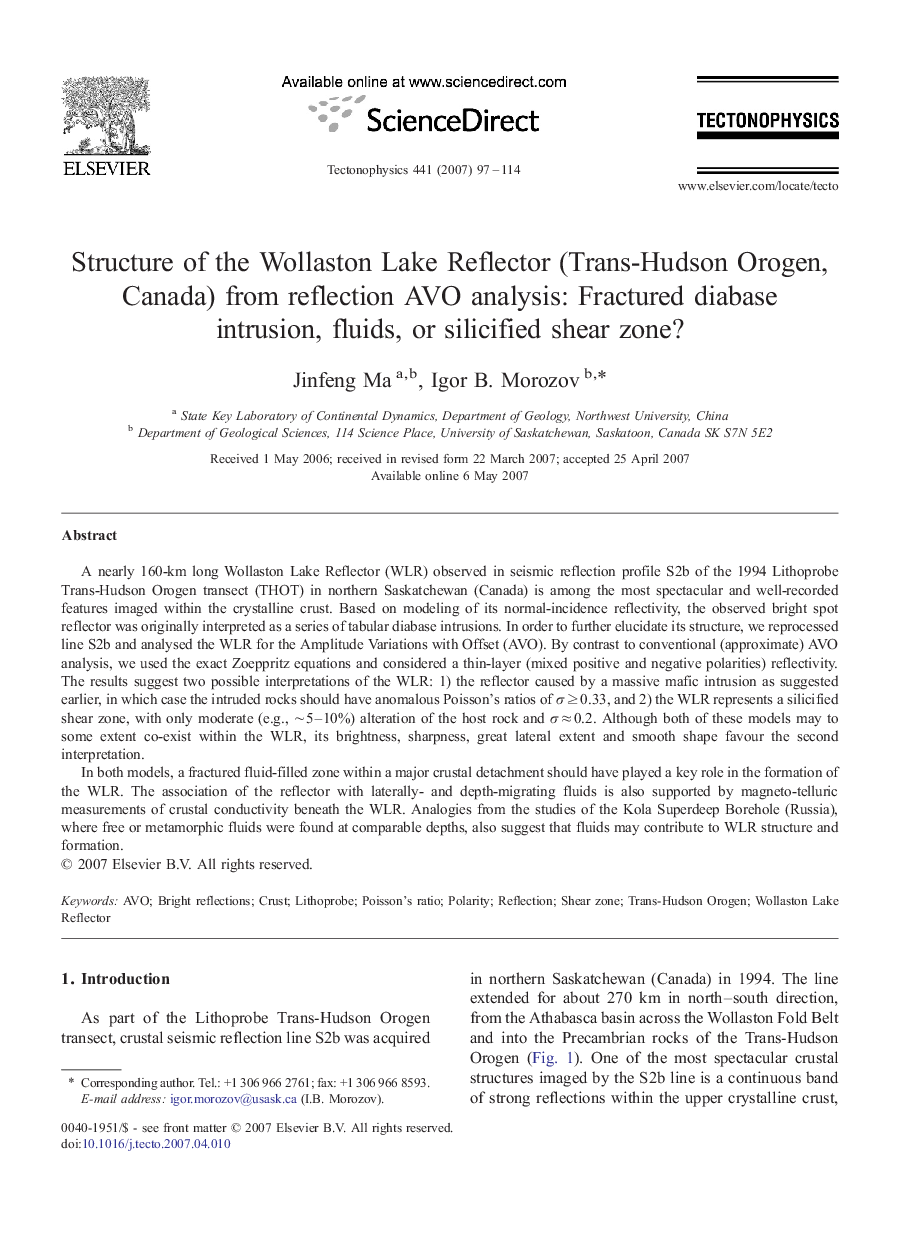| کد مقاله | کد نشریه | سال انتشار | مقاله انگلیسی | نسخه تمام متن |
|---|---|---|---|---|
| 4694608 | 1636928 | 2007 | 18 صفحه PDF | دانلود رایگان |

A nearly 160-km long Wollaston Lake Reflector (WLR) observed in seismic reflection profile S2b of the 1994 Lithoprobe Trans-Hudson Orogen transect (THOT) in northern Saskatchewan (Canada) is among the most spectacular and well-recorded features imaged within the crystalline crust. Based on modeling of its normal-incidence reflectivity, the observed bright spot reflector was originally interpreted as a series of tabular diabase intrusions. In order to further elucidate its structure, we reprocessed line S2b and analysed the WLR for the Amplitude Variations with Offset (AVO). By contrast to conventional (approximate) AVO analysis, we used the exact Zoeppritz equations and considered a thin-layer (mixed positive and negative polarities) reflectivity. The results suggest two possible interpretations of the WLR: 1) the reflector caused by a massive mafic intrusion as suggested earlier, in which case the intruded rocks should have anomalous Poisson's ratios of σ ≥ 0.33, and 2) the WLR represents a silicified shear zone, with only moderate (e.g., ∼ 5–10%) alteration of the host rock and σ ≈ 0.2. Although both of these models may to some extent co-exist within the WLR, its brightness, sharpness, great lateral extent and smooth shape favour the second interpretation.In both models, a fractured fluid-filled zone within a major crustal detachment should have played a key role in the formation of the WLR. The association of the reflector with laterally- and depth-migrating fluids is also supported by magneto-telluric measurements of crustal conductivity beneath the WLR. Analogies from the studies of the Kola Superdeep Borehole (Russia), where free or metamorphic fluids were found at comparable depths, also suggest that fluids may contribute to WLR structure and formation.
Journal: Tectonophysics - Volume 441, Issues 1–4, 15 August 2007, Pages 97–114